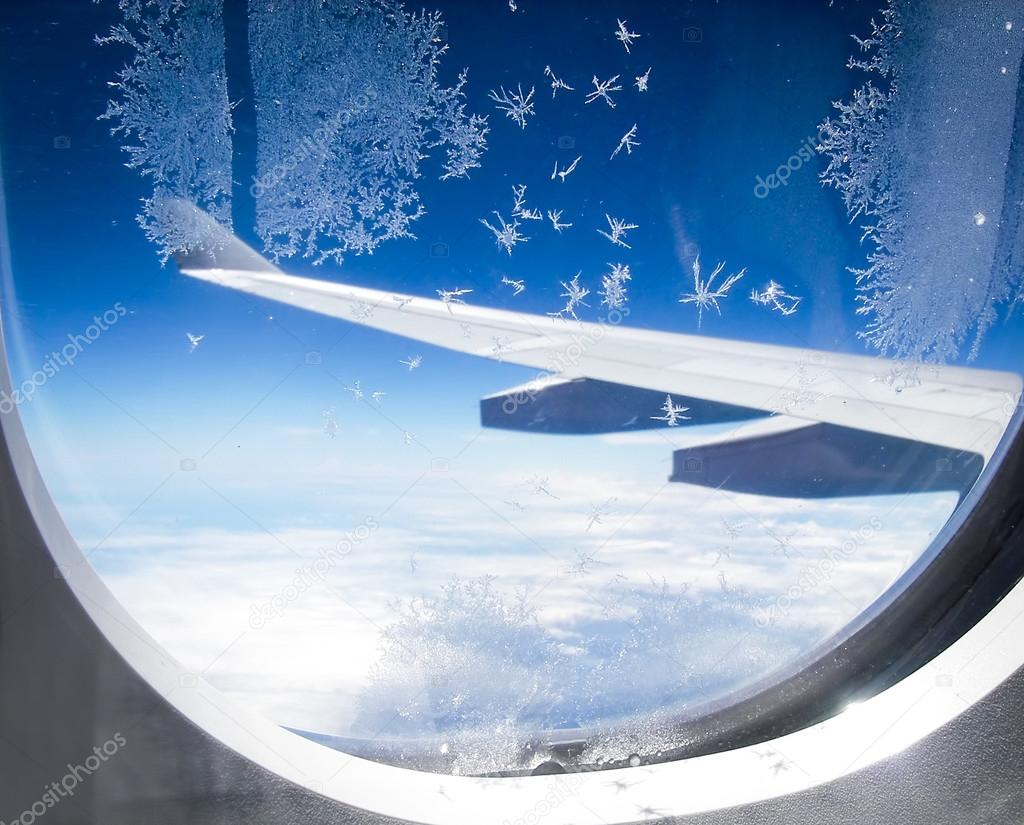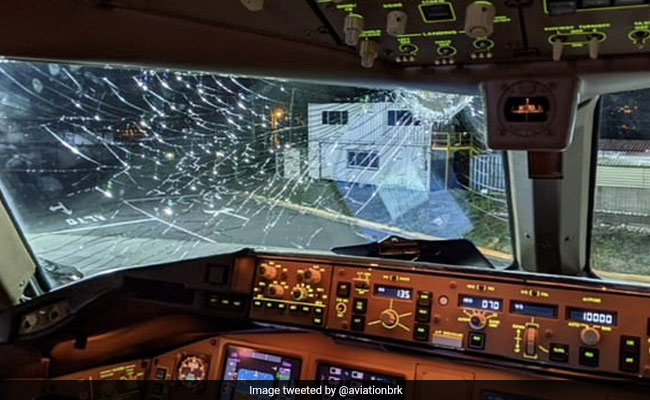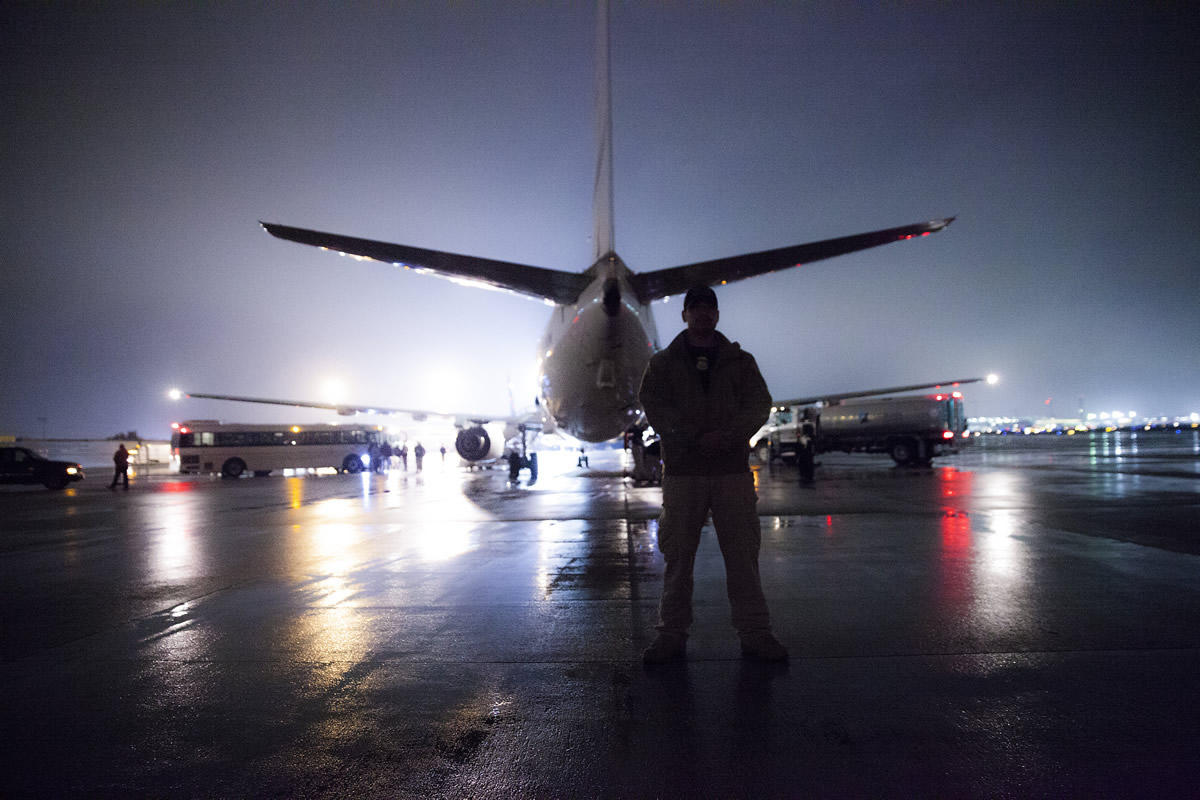Ice Aircraft - If you play hockey or mix drinks, you may dream of perfectly clean ice. But if you're flying an airplane, clear ice isn't like a dream, and it's a potential nightmare. So how does that perfectly clear ice water look on your plane?
Fresh ice usually forms at relatively high temperatures, between 2 C and -10 C. And at that warm temperature, there is another important ingredient: lots of water. This water usually comes in the form of large drops of water, snow and ice.
Ice Aircraft

When flying in conditions with the right temperature and humidity, the chance of picking up clear ice is very high. So what does it look like? Well, it's usually pretty obvious. Think about that.
New Technology To Determine Ice On Aircraft
You can see in the picture above that the clear ice is hard to see. That is one of the reasons why it is so dangerous. But it is also dangerous for another reason, namely:
When you fly through supercooled water droplets (water droplets below 0C but still liquid), they hit the surface of your plane and bounce back, freezing on the way. This is bad because as the droplets freeze, they form shapes that change the overall shape of your airfoil. The worst is the formation of "horns", two icy protrusions that greatly hinder the flow of air on the wings and tail.
First, it's heavy. Because there are usually no large air pockets in pure ice, unlike sheet or mixed ice, it is usually solid water ice. And since water weighs 8.3 pounds per gallon, it doesn't take long for your airplane's weight to increase significantly.
After that, pure ice is hard. Which means that for aircraft with de-icing systems, such as inflatable boots, it can be difficult for the anti-icing system to fully explode and remove all the ice.
S 2014 20 1
Finally, and perhaps the biggest danger, is that fresh ice can form everywhere. Well, not everywhere, but the point is that even though water droplets freeze in pure ice on your aircraft, they can flow further than your anti-icing system can reach on your wings and tail. And if you have clear ice on top of your icing boots, that's too bad.
Staying away from areas with warm temperatures and high humidity is the best way to avoid the dangers of fresh ice.
But if you find yourself on clear ice, a quick descent, climb, or turn is the best way to prevent ice from accumulating on your plane in places you don't want it to. see them.

Colin is a co-founder of a lifelong airline. He was a flight instructor at the University of North Dakota, a CRJ-200 pilot, and managed the development of several commercial and military training systems. You can find it at colin@. In aviation terms, icing conditions are atmospheric conditions that can lead to the formation of water ice on an aircraft. Accumulation and accumulation of ice can affect the surface of the aircraft - this is called airframe icing.
New Sprayable Ice Shedding Material Is 100 Times Stronger
These types can occur, but they do not necessarily occur together. Airframe and engine icing have caused many fatal accidents in aviation history.
Not all aircraft, especially general aviation, are certified for flights to known icing areas (FIKI) - that is, flying to areas with confirmed or probable conditions, based on reports of the pilot, expectations and forecasts.
In order to obtain FIKI certification, aircraft must have proper anti-icing equipment to prevent accidents caused by icing.
Freezing conditions exist when the air contains very cold water droplets. They freeze when they come into contact with a potential nucleation site, which in this case is the plane parts, which causes icing. Ice conditions are largely characterized by droplet size, water content and air temperature. These parameters affect the extt, type and speed that determine the formation of ice on the aircraft. State air regulations have a definition of icing conditions
How To Build A Runway Out Of Solid Ice
Which other airlines are guaranteed to fly. The so-called SLD or supercooled large drop conditions are beyond that definition and present a certain danger to the aircraft, which all aircraft should try to avoid.
Qualitatively, flight reports show ice conditions in terms of their effect on the aircraft, and will depend on the available capabilities of the aircraft. Different airlines may report the same number of conditions resulting in different icing conditions. Ice detectors are often used to indicate the presence of icy conditions.
This section does not list any sources. Please help improve this section by adding quotes from reliable sources. Unsourced material can be challenged and removed. (December 2019) (Learn how to remove this message template and how to remove it)
)
Often the wing will stand on the lower side of the attack, and thus the higher speed, contaminated by the ice. Even a small amount of ice will have an effect, and if the ice is sharp, it can have a large effect. Therefore, it is advised to increase the approach speed if ice is still on the wings. The increase depends on the type of aircraft and the size of the ice. The handling characteristics of aircraft with ice-contaminated wings will be reduced, and serious roll control problems are rare. Ice accumulation can be asymmetric between the two wings that need to be measured. Also, the outer part of the wing, which is usually thin and therefore collects ice well, may stop first rather than last.
S 7d5041 09
There are several ways to reduce the risk of frostbite by using a frost protection system. The first and easiest is to avoid icing conditions completely, but for many aircraft this is not practical.
If ice (or other debris) is present on the aircraft prior to takeoff, it must be removed from critical areas. Removal can take several forms:
All of these methods remove existing contamination, but do not provide effective protection in freezing conditions. If icing conditions exist or are expected prior to takeoff, anti-icing fluids are used. They are thicker than deicing water and temporarily resist the effects of snow and rain. They are intended to cut off the aircraft during take-off and do not provide protection during flight.
Dash 8 wing deicing boot.
New Technological Solutions To Prevent Ice Formation On Aircraft
In all of these cases, only critical areas and parts of the aircraft are usually protected. In particular, usually only the leading edge of the wing is protected.
Carburetor coolant is used in carburetor engines to prevent and clear icing. Fuel injected engines are not affected by carburetor icing, but they can suffer from restricted intake. Another source of spirit is often found in these gins.
There is a difference between de-icing and anti-icing. De-icing refers to the removal of ice from the air; anti-icing means preventing the accumulation of ice on the airframe.

Unmanned aerial vehicles are an emerging technology with a wide range of commercial and military applications. De-icing occurs during flight in freezing clouds or freezing rain and can be dangerous for all aircraft. Flight icing on UAVs severely limits the range of operations.
Cold Weather Operations
The parts of the UAV most exposed to icing are the airspeed ssor, the main limit of the aerodynamic areas, rotors and propellers.
Freezing of drones is a global phenomenon, and freezing conditions in high-performance areas can occur year-round around the world. However, risks of icing are much higher in the subarctic, Arctic and Antarctic regions. In large parts of the Nordic countries, for example, freezing conditions range from 35% to more than 80% of the time from September to May.
This audio file was created from a review of this article dated December 9, 2017 (2017-12-09), and does not reflect subsequent changes. Winter in the United States can present some of the most dangerous weather conditions for aviation, including freezing rain, snow and ice. But these hazardous weather conditions were perfect for the FAA's In-Cloud ICing and Large-drop Experiment (ICICLE) campaign. ICICLE seeks to collect flight data in some of the toughest conditions in North America.
ICICLE is part of the FAA's Aviation Climate Research Program, whose research aims to reduce the impact of weather on aircraft in the National Airspace System (NAS). Through ICICLE, the FAA will support the development of terminal and national products. The data collected at ICICLE will help develop and validate meteorological tools to identify ice conditions that pilots may encounter, both at the destination and en-route. By improving weather tools and forecasting models, the FAA hopes to reduce the risks and dangers associated with aircraft crashes.
How Potassium Based De Icers Ensure Safe Air Travel
Two FAA projects led the ICICLE campaign: the Inflight Icing program (supporting research for the site) and the Terminal Area Icing Weather Information for NextGen (TAIWIN) research project (supporting the development and new capacity assessment for the terminal area. ). Stephanie DiVito, FAA manager for TAIWIN and ICICLE, notes that “These complex icing areas can be difficult to identify and predict.
Iada shipping, iada, iada de laurentiis, my iada, aircraft management, iada jobs, aircraft insurance, iada appraisers, iada forms, iada conference, iada logo, aircraft
0 Comments